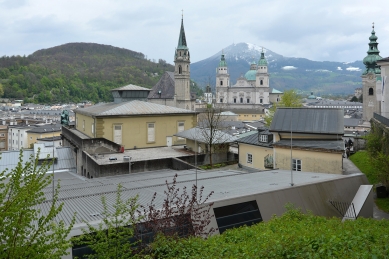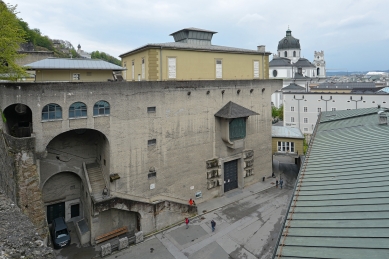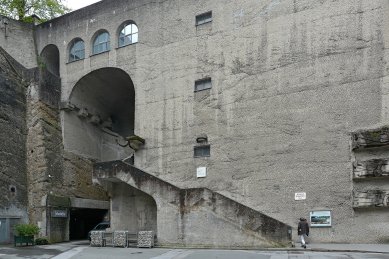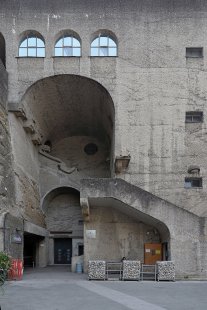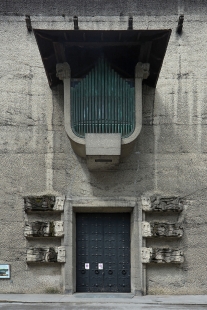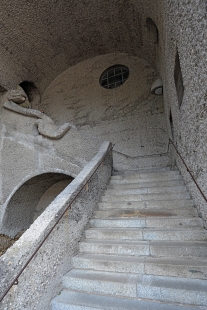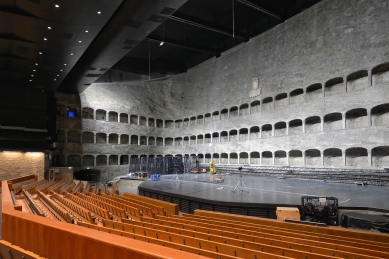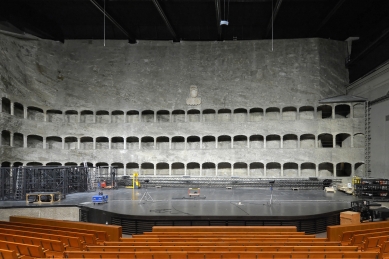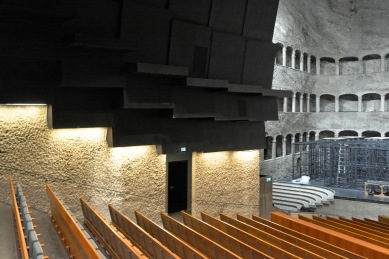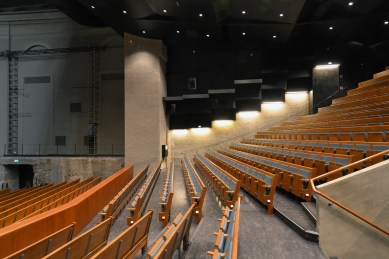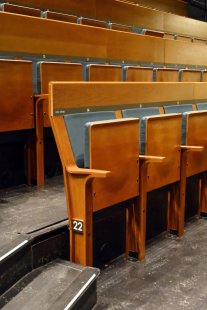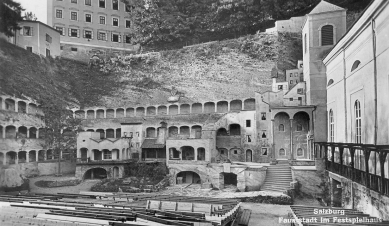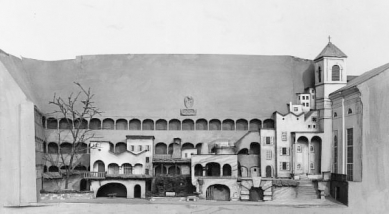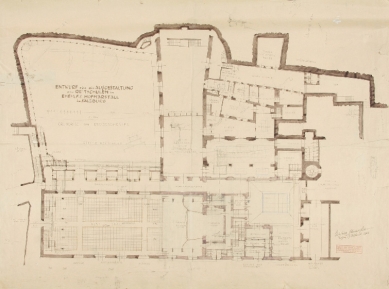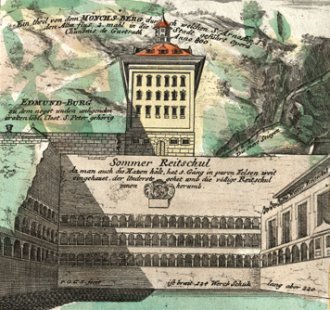
Musical hall in the former riding school
Felsenreitschule Salzburg

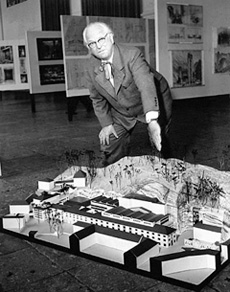 |
The Salzburg celebrations are also associated with the name of architect Clemens Holzmeister, who participated in renovations, reconstructions, and the construction of new buildings for more than four decades. Holzmeister, who was a representative of traditionalist currents in architecture, reconstructed a small concert hall in the mid-1920s (which was reconstructed in 2006 for Mozart's 250th birthday by W.Holzbauer) and at the end of the 1930s, transformed the former summer riding school Felsenreitschule from the late 17th century at the foot of the steep Monchsberg slope, which was originally designed by Johann Bernhard Fischer von Erlach.
Originally, the audience watched musical performances from three rows of arched arcades carved into the rock. Later, the stage was covered, a grandstand was built for girls on the opposite side, and the 96 stone arches became an impressive backdrop. After World War II, Clemens Holzmeister also contributed to the construction of the third largest hall (1956-60) with a capacity of 2,200 spectators.
The English translation is powered by AI tool. Switch to Czech to view the original text source.
0 comments
add comment


